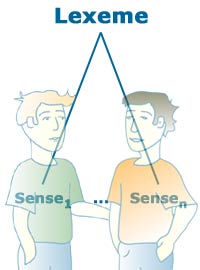Pragmatic Ambiguity
 Pragmatic (or open) ambiguity occurs if in any specific context,
a given utterance has one interpretation, and in a different context another. The context includes the situation in which the utterance is produced and the participants (speaker and hearer). Thus, pragmatic ambiguity arises when language is put to
use. For example, speakers may use the same utterance to perform different illocutionary acts in different
contexts:
Pragmatic (or open) ambiguity occurs if in any specific context,
a given utterance has one interpretation, and in a different context another. The context includes the situation in which the utterance is produced and the participants (speaker and hearer). Thus, pragmatic ambiguity arises when language is put to
use. For example, speakers may use the same utterance to perform different illocutionary acts in different
contexts:
- Do you have life insurance? (offer, request or threat?)
- I've got plans for you. (promise, statement or threat?)
Other cases involve a multiplicity of possible referents of definite noun phrases in different contexts:
- The student passed the exam.
(The definite noun phrases in this sentence designate a particular student and a particular exam in one context, and different students and exams in other contexts. Since the imaginable contexts are in fact endless, the number of readings of this sentence is potentially infinite too.)
Generally, it is debatable whether the examples presented here actually exhibit ambiguity, or merely show the context dependence of interpretations. In fact, there is no evidence that speakers and hearers need to store multiple meanings of student or exam, for example, in order to interpret the utterance above in different contexts.
